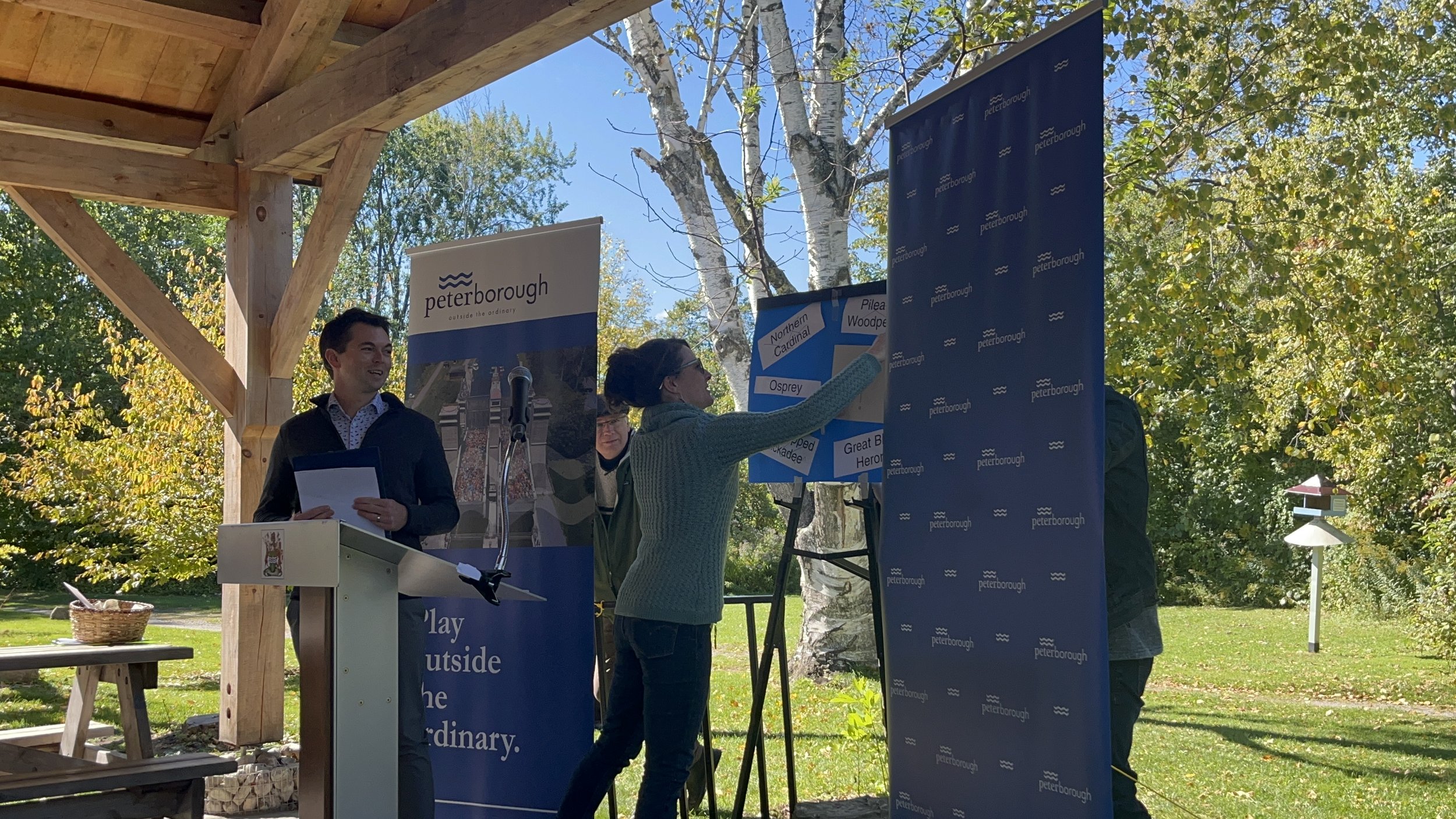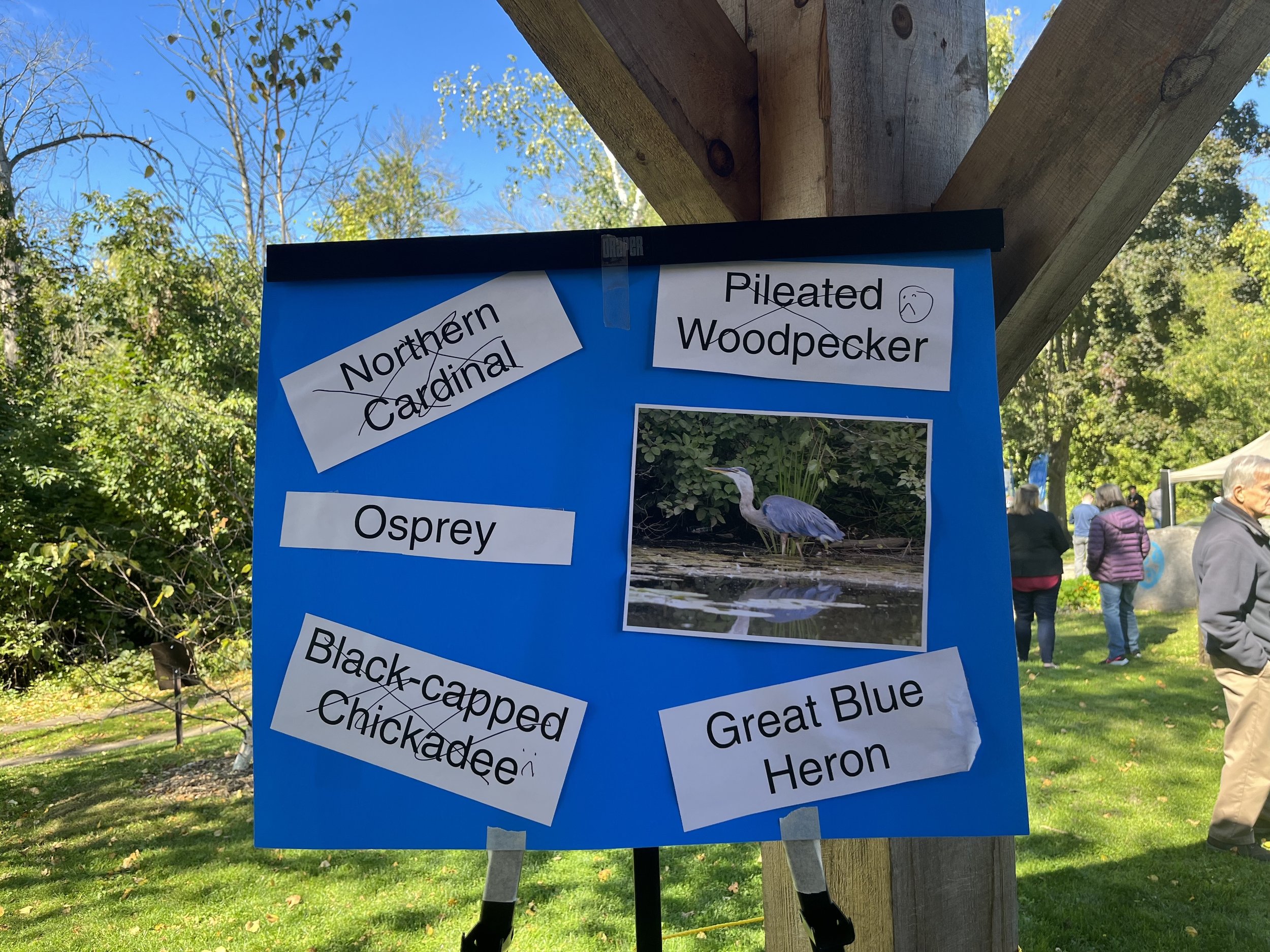Great Blue Heron Announced As Peterborough's Official Bird At EnviroX
/The great blue heron has been crowned Peterborough’s first official city bird during the Environmental and Climate Action Expo (EnviroX) at Beavermead Park on Friday.
Photo by Felicia Massey.
EnviroX at Beavermead Park and Ecology Park brought together community partners and municipal workers to teach about initiatives and projects that lead to greenhouse gas emission reductions. They also taught greater environmental sustainability through demonstrations and displays.
Bird Friendly Peterborough (BFP), an organization dedicated to creating Bird Friendly Cities, spoke at EnviroX about the City’s commitment to monitoring bird populations and mitigating any threats.
Earlier this year, it was announced that Peterborough is recognized as a Bird Friendly City.
Nature Canada’s Bird Friendly City program certifies cities throughout Canada based on meeting a set of standards pertaining to reducing threats to birds in their municipality, protecting and restoring natural habitats and increasing climate resiliency. Bird Friendly Cities also actively engage their community in these protective and restorative initiatives through education and outreach.











